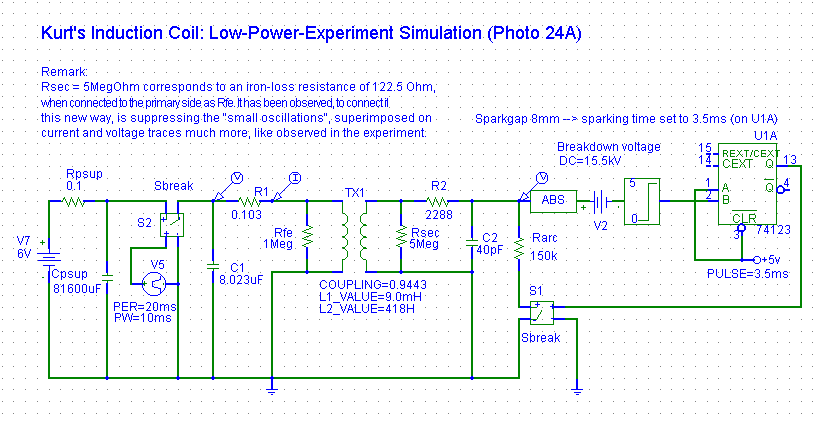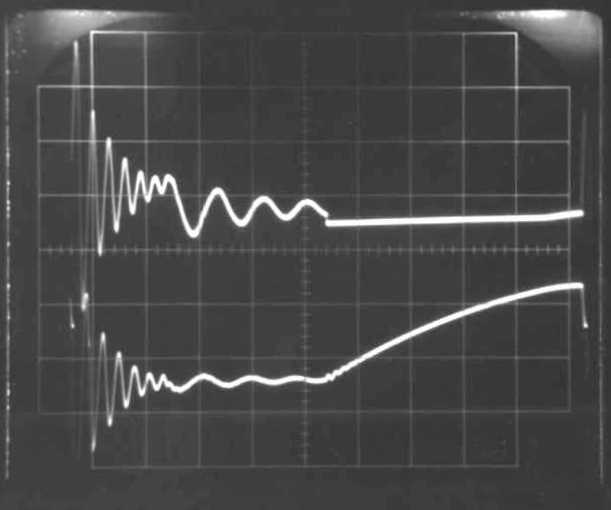|
|
| Operating the inductor with 8 mm secondary-spark.
The
sparking time is adapted to the experiment (3.5ms; sorry: no predictive
way!). The breakdown voltage of the sparkgap was estimated by a first simulation
run without spark (breakdown voltage set to DC=1000kV), then reading the
first peak of U2~15.5kV, then setting DC=15kV. The log-decrement of the
oscillations in dominated by the value of the "iron resistor" Rfe, which,
within reasonable limits, regarding results from 50Hz "transformer tests",
was looked at, as a fitting parameter for the damping behavior of the oscillations.
However, in this simulation, Rfe was transferred to the secondary side,
as Rsec, by multiplying
Rfe with the winding ratio n=N2/N1squared
(= 2022
= 40'804; ...Rfe=1M in the schematic is only a placeholder!).
The simulation result, giving a qualitatively less satisfying representaton
of the experiment than before, is considered better, because of:
1.) Simulated voltage U1 closer to experiment ( i.e. U1max = 70V(sim.)
vs. 66V(exp.) )
|
 |
|
| Simulated Waveform | Waveform Photo 33A |
 |
 |